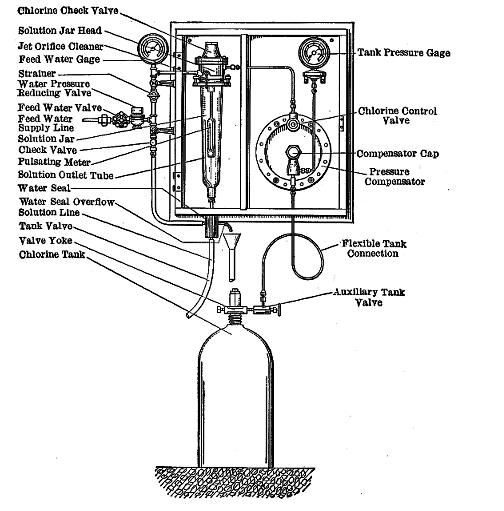|
Mundaring Weir
Mundaring Weir is a dam (and historically the adjoining locality) located from Perth, Western Australia in the Darling Scarp. The dam and reservoir form the boundary between the suburbs of Reservoir and Sawyers Valley. The dam impounds the Helena River. History A soldier, Ensign Robert Dale, became the first European to explore the region in 1829. European populations did not grow significantly until construction of the dam in the late 1890s. This involved the building of a Mundaring Weir railway line from Mundaring to the Mundaring Weir site. The Irish Australian engineer C. Y. O'Connor was involved in the design of a scheme that transported water to the Eastern Goldfields of Coolgardie and Kalgoorlie in the eastern part of Western Australia. The weir was completed in 1903. The lake created by the dam was known as the Helena River Reservoir, it was renamed as Lake C.Y. O'Connor in 2004. The owner of the dam, the Water Corporation, refers to the weir as Mundaring Dam o ... [...More Info...] [...Related Items...] OR: [Wikipedia] [Google] [Baidu] |
Weir
A weir or low head dam is a barrier across the width of a river that alters the flow characteristics of water and usually results in a change in the height of the river level. Weirs are also used to control the flow of water for outlets of lakes, ponds, and reservoirs. There are many weir designs, but commonly water flows freely over the top of the weir crest before cascading down to a lower level. Etymology There is no single definition as to what constitutes a weir and one English dictionary simply defines a weir as a small dam, likely originating from Middle English ''were'', Old English ''wer'', derivative of root of ''werian,'' meaning "to defend, dam". Function Commonly, weirs are used to prevent flooding, measure water discharge, and help render rivers more navigable by boat. In some locations, the terms dam and weir are synonymous, but normally there is a clear distinction made between the structures. Usually, a dam is designed specifically to impound water beh ... [...More Info...] [...Related Items...] OR: [Wikipedia] [Google] [Baidu] |
National Trust Of Australia
The National Trust of Australia, officially the Australian Council of National Trusts (ACNT), is the Australian national peak body for community-based, non-government non-profit organisations committed to promoting and conserving Australia's Indigenous, natural and historic heritage. The umbrella body was incorporated in 1965, with member organisations in every state and territory of Australia. History Modelled on the National Trust for Places of Historic Interest or Natural Beauty and inspired by local campaigns to conserve native bushland and preserve old buildings, the first Australian National Trusts were formed in New South Wales in 1945, South Australia in 1955 and Victoria in 1956; followed later in Western Australia, Tasmania and Queensland. The two Territory Trusts were the last to be founded, in 1976 (see below). The driving force behind the establishment of the National Trust in Australia was Annie Forsyth Wyatt (1885–1961). She lived for much of her life ... [...More Info...] [...Related Items...] OR: [Wikipedia] [Google] [Baidu] |
Australian Railway History
''Australian Railway History'' is a monthly magazine covering railway history in Australia, published by the New South Wales Division of the Australian Railway Historical Society on behalf of its state and territory Divisions. Australian Railway Historical Society History and profile It was first published in 1937 as the ''Australasian Railway and Locomotive Historical Society Bulletin'', being renamed ''ARHS Bulletin'' in 1952. In January 2004, the magazine was re-branded as ''Australian Railway History''. Historically, the magazine had a mix of articles dealing with historical material and items on current events drawn from its affiliate publications. Today, it contains only historical articles, two or three of them being in-depth.Parameters * Size : A4; ...[...More Info...] [...Related Items...] OR: [Wikipedia] [Google] [Baidu] |
Garratt
A Garratt (often referred to as a Beyer Garratt) is a type of steam locomotive invented by British engineer Herbert William Garratt that is articulated into three parts. Its boiler, firebox, and cab are mounted on a centre frame or "bridge". The two other parts, one at each end, have a pivot to support the central frame; they consist of a steam engine unit – with driving wheels, trailing wheels, valve gear, and cylinders, and above it, fuel and/or water storage. Articulation permits locomotives to negotiate curves that might restrict large rigid-framed locomotives. The design also provides more driving wheels per unit of locomotive weight, permitting operation on lightly engineered track. Garratt locomotives produced as much as twice the power output of the largest conventional locomotives of railways that introduced them, reducing the need for multiple locomotives and crews. Advantages of the Garratt concept The principal benefit of the Garratt design is that the b ... [...More Info...] [...Related Items...] OR: [Wikipedia] [Google] [Baidu] |
WAGR Msa Class
The WAGR Msa class was a class of Garratt-type articulated steam locomotives. The class was built at the Midland Railway Workshops and operated by the Western Australian Government Railways (WAGR) between 1930 and 1963. It was the first Garatt type to be designed and constructed entirely in Australia. History The class was preceded on the WAGR system by the M/Ms class Garratts. The class were used extensively on WAGR lines with light rails and sharp curves, as a consequence many of the smaller older branch lines on the Darling Scarp; as well as those with steep inclines such as those on the Mundaring Weir, Nannup, and Flinders Bay Flinders Bay is a bay and locality that is immediately south of the townsite of Augusta, and close to the mouth of the Blackwood River. The locality and bay lies to the north east of Cape Leeuwin which is the most south-westerly mainland poin ... lines. In their later years, the boiler pressure was reduced to match that of the M/Ms clas ... [...More Info...] [...Related Items...] OR: [Wikipedia] [Google] [Baidu] |
Zig Zag (railway)
A railway zig zag or switchback, is a method of climbing steep gradients with minimal need for tunnels and heavy earthworks. For a short distance (corresponding to the middle leg of the letter "Z"), the direction of travel is reversed, before the original direction is resumed. Some switchbacks do not come in pairs, and the train may then need to travel backwards for a considerable distance. A location on railways constructed by using a zig-zag alignment at which trains must reverse direction to continue is a reversing station. One of the best examples is the Darjeeling Himalayan Railway, a UNESCO World Heritage Site railway in India, that has six full zig zags and three spirals. Advantages Zig zags tend to be cheaper to construct because the grades required are discontinuous. Civil engineers can generally find a series of shorter segments going back and forth up the side of a hill more easily and with less grading than they can a continuous grade, which must contend w ... [...More Info...] [...Related Items...] OR: [Wikipedia] [Google] [Baidu] |
Public Works Department (Western Australia)
The Public Works Department (PWD) was the State Government Agency of Western Australia, which was charged with providing and maintaining public infrastructure such as dams, water supplies, schools, hospitals, harbours and other public buildings. The department is no longer operational, having its responsibilities reassigned to other State Government Departments and corporate entities since 1985. History The history of the department is difficult to accurately describe given the broad range of tasks performed by the department and also the evolutionary development of the organisation. The department was instrumental in the success of Western Australia, aiding in transforming it from a colonial settlement to a prosperous state. Given the remoteness of Western Australia, the importance of the P.W.D. with its self-sufficient design and construction skills will probably never be fully appreciated. Pre P.W.D. Construction of infrastructure in the Swan River colony was originally o ... [...More Info...] [...Related Items...] OR: [Wikipedia] [Google] [Baidu] |
Fluoridation
Water fluoridation is the controlled adjustment of fluoride to a public water supply solely to reduce tooth decay. Fluoridated water contains fluoride at a level that is effective for preventing cavities; this can occur naturally or by adding fluoride. Fluoridated water operates on tooth surfaces: in the mouth, it creates low levels of fluoride in saliva, which reduces the rate at which tooth enamel demineralizes and increases the rate at which it remineralizes in the early stages of cavities. Typically a fluoridated compound is added to drinking water, a process that in the U.S. costs an average of about $ per person-year. Defluoridation is needed when the naturally occurring fluoride level exceeds recommended limits. In 2011, the World Health Organization suggested a level of fluoride from 0.5 to 1.5 mg/L (milligrams per litre), depending on climate, local environment, and other sources of fluoride. Bottled water typically has unknown fluoride levels. Tooth decay re ... [...More Info...] [...Related Items...] OR: [Wikipedia] [Google] [Baidu] |
Water Chlorination
Water chlorination is the process of adding chlorine or chlorine compounds such as sodium hypochlorite to water. This method is used to kill bacteria, viruses and other microbes in water. In particular, chlorination is used to prevent the spread of waterborne diseases such as cholera, dysentery, and typhoid. History In a paper published in 1894, it was formally proposed to add chlorine to water to render it "germ-free". Two other authorities endorsed this proposal and published it in many other papers in 1895. Early attempts at implementing water chlorination at a water treatment plant were made in 1893 in Hamburg, Germany. In 1897 the town of Maidstone, England was the first to have its entire water supply treated with chlorine. Permanent water chlorination began in 1905, when a faulty slow sand filter and a contaminated water supply caused a serious typhoid fever epidemic in Lincoln, England. Alexander Cruickshank Houston used chlorination of the water to stop the epidem ... [...More Info...] [...Related Items...] OR: [Wikipedia] [Google] [Baidu] |






